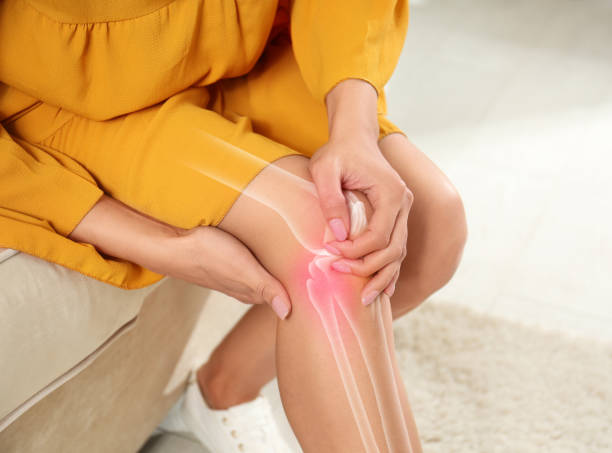
In today’s fast-paced world, women’s health has emerged as a central pillar of holistic well-being. From hormonal balance to emotional stability and preventive care, wellness practices tailored for women can lead to stronger immunity, greater vitality, and enhanced mental clarity. In this comprehensive guide, we delve into the most effective wellness practices for women of all ages to promote long-term health and resilience.
Nutrition: The Foundation of Female Wellness
A balanced diet is not just about weight management; it is crucial for hormonal harmony, reproductive health, bone strength, and energy regulation. Women’s nutritional needs change through adolescence, childbearing years, menopause, and beyond.
Essential Nutrients for Women’s Health
- Iron: Especially vital during menstruation to prevent anemia.
- Calcium and Vitamin D: For bone health, particularly post-30 when bone density starts declining.
- Folic Acid: Essential for women of childbearing age to prevent neural tube defects during pregnancy.
- Omega-3 Fatty Acids: Support cardiovascular health and reduce inflammation.
- Magnesium and Zinc: For mood stability and immune support.
Best Dietary Practices
- Incorporate leafy greens, legumes, fatty fish, and whole grains daily.
- Limit processed sugars and trans fats to reduce risk of heart disease and hormonal imbalances.
- Stay hydrated—aim for at least 8–10 glasses of water daily.
- Opt for organic produce when possible to reduce toxin exposure.
Hormonal Health and Balance
Hormonal fluctuations impact mood, skin, metabolism, fertility, and menstrual cycles. Maintaining hormonal balance is essential for overall health.
Top Strategies to Support Hormonal Health
- Adaptogenic herbs like ashwagandha, maca, and holy basil can help manage stress-induced hormonal changes.
- Avoid endocrine disruptors found in plastics, pesticides, and conventional cosmetics.
- Ensure adequate sleep (7–9 hours) to regulate cortisol and melatonin levels.
- Practice mindful movement such as yoga, which supports endocrine and reproductive organs.
Fitness and Movement for Female Physiology
Physical activity benefits not just physical but also mental and hormonal well-being.
Recommended Exercises for Women
- Cardio: Brisk walking, cycling, and swimming to maintain heart health.
- Strength Training: Helps prevent osteoporosis and maintain lean muscle mass, especially important after 40.
- Pelvic Floor Exercises: Crucial postpartum and during aging to prevent urinary incontinence.
- Yoga and Pilates: Improve flexibility, reduce stress, and support hormonal balance.
Consistency Over Intensity
Exercise should be sustainable and enjoyable. Aim for 150 minutes of moderate activity per week, along with two strength training sessions.
Mental and Emotional Well-being
Women are more prone to anxiety, depression, and stress-related illnesses due to hormonal fluctuations and societal pressures.
Mental Health Practices for Women
- Mindfulness meditation: Reduces anxiety, enhances self-awareness, and promotes emotional regulation.
- Journaling: Encourages emotional release and clarity.
- Therapy or Counseling: A proactive measure to address unresolved trauma, stress, or relational issues.
- Build a support system—trusted friends, family, or women’s wellness groups can foster resilience.
Sleep Hygiene: Restorative Sleep for Recovery
Sleep is when the body and brain perform essential repair processes. Women, especially during hormonal transitions like pregnancy or menopause, may face sleep disturbances.
How to Improve Sleep Quality
- Create a consistent bedtime routine and sleep in a dark, cool environment.
- Avoid blue light exposure from screens at least an hour before bed.
- Use natural sleep aids like magnesium, chamomile tea, or lavender oil.
- Address underlying conditions like sleep apnea, anxiety, or restless leg syndrome.
Preventive Health Screenings
Early detection is critical for managing chronic conditions and maintaining health throughout life.
Key Screenings for Women
- Pap smear and HPV testing: Every 3–5 years after age 21 to detect cervical cancer.
- Mammograms: Annually or biannually starting at age 40, depending on risk factors.
- Bone density tests: After menopause to assess osteoporosis risk.
- Regular blood panels: Check thyroid, glucose levels, lipid profile, and hormone levels.
- Pelvic exams and breast self-examinations: Monthly breast checks can catch abnormalities early.
Menstrual Health and Reproductive Care
From PMS to menopause, reproductive health is a lifelong journey that impacts physical and emotional states.
Best Practices for Menstrual and Reproductive Wellness
- Track menstrual cycles using apps to identify irregularities.
- Use menstrual products that are free of chemicals and fragrances.
- Manage PMS with B6, magnesium, and anti-inflammatory foods.
- During perimenopause and menopause, consider natural remedies like black cohosh or consult a specialist for bioidentical hormone therapy.
Gut Health and the Microbiome
Emerging science shows a direct link between gut bacteria and immunity, skin clarity, mental health, and even estrogen metabolism.
Steps to Improve Gut Health
- Eat a fiber-rich diet full of prebiotics (onions, garlic, bananas) and probiotics (yogurt, kefir, kimchi).
- Reduce the use of unnecessary antibiotics and sugar.
- Drink bone broth or take collagen supplements to support the gut lining.
- Stay active and manage stress—chronic stress impairs digestion and gut flora balance.
Skincare and Natural Beauty Practices
Skin is the body’s largest organ and reflects internal health and hormonal balance.
Top Skin Health Tips
- Use non-toxic, pH-balanced skincare products.
- Protect against sun damage with broad-spectrum SPF 30+.
- Support collagen naturally with Vitamin C, zinc, and hydration.
- Detox skin weekly using natural masks like clay, charcoal, or turmeric-based treatments.
Spiritual Wellness and Self-Connection
A strong sense of purpose and self-awareness enhances emotional stability and life satisfaction.
Practices for Inner Wellness
- Practice gratitude daily—it reduces stress and promotes a positive outlook.
- Connect with nature—walks in green spaces lower cortisol and boost mood.
- Explore spiritual paths such as meditation, prayer, or breathwork.
- Set boundaries and prioritize self-care without guilt.
Conclusion: Creating a Personalized Wellness Routine
No two women are the same, and neither are their health needs. True wellness comes from listening to your body, honoring your cycles, and making conscious, informed decisions. Small, consistent habits—when aligned with your body’s natural rhythm—can result in lifelong vitality and joy.




